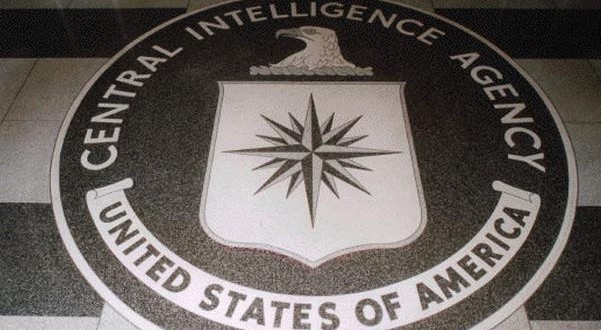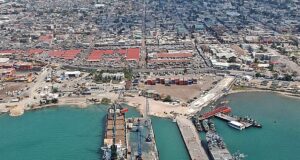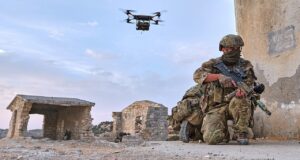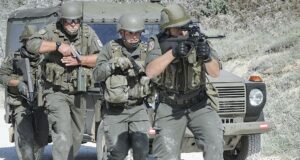Priority Stetting Stage
The key antinomies which hampered intelligence activities at the priority-setting stage were the separations between domestic and international spheres of intelligence and between law enforcement and intelligence collection. Threats based external to the United States are dealt with by the Central Intelligence Agency (CIA), whilst domestic counter-terrorism was under the purview of the Federal Bureau of Investigation (FBI). According to Ilardi:
the perceived threat from Al Qaeda was such that the collection of intelligence on Al Qaeda became a high priority for U.S. intelligence and the White House in the two years leading up to the 9/11 attacks[4].
The American intelligence community clearly prioritised al Qaeda, but the fact that the responsibilities for intelligence gathering were separated between the domestic and international sphere meant that the CIA, as per its remit, and against the background of the USS Cole bombing[5] and the east African embassy bombings[6], looked into the possibility of al Qaeda staging an attack on American interests overseas. The Counter Terrorism Center, established by Robert Gates and William Casey, expected an attack overseas[7]. Threat reports “seemed to be focused on Saudi Arabia, Israel, Bahrain, Kuwait, Yemen, and possibly Rome[8]”. The FBI placed very little emphasis on counterterrorism because, as a law enforcement agency, the primary incentive for employees to gain promotions was to secure convictions. Very few resources were put into preclusive investigations aimed at thwarting future attacks. As Zegart notes:
.As such, whilst the CIA correctly prioritised al Qaeda and the FBI set up a Bin Laden unit[10], the CIA wrongly investigated possible attempts to stage attacks abroad and the FBI wrongly prioritised gathering intelligence on Bin Laden’s past, rather than his future. Consequently, a plot planned mostly abroad, but carried out in America, slipped through the cracks between the domestic and international separation.
Collection Stage
The collection stage was hamstrung by the separation of domestic and international spheres and the separation of intelligence collectors from analysts.
The first two antinomies mentioned here are covered by the same problem. Information sharing between the FBI and the CIA and even between FBI agents covering intelligence matters and those working on criminal cases were severely regulated by procedures, often referred to as “the wall”, put in place by General Attorney Janet Reno in 1995[11]. This was following the conviction of Aldrich Ames, which the Department of Justice’s Office of Intelligence Policy and Review (OIPR), worried could have been quashed if the judge considered the collaboration between the FBI and prosecutors as a violation of the Foreign Intelligence Surveillance Act (FISA), invalidating the FISA warrant issued and, hence any evidence gathered under its auspices[12]. Reno’s procedures, according to the 9/11 Commission Report were “almost immediately misunderstood and misapplied[13]”, and they “evolved into the still more exaggerated belief that the FBI could not share any intelligence information with criminal investigators, even is no FISA procedures had been used[14]”. This mistake stopped the flow of information to the agencies and actors that needed it.
A shocking example of this is the Phoenix memo. Special Agent Kenneth Williams alerted FBI Headquarters and the field office in New York of a worrying trend of Islamic extremists enrolling in flying lessons in Arizona. He identified a man who was later found to have close ties to 9/11 hijacker Hani Hanjour, but no leads were followed up because the suspect was outside of the US and, in Zegart’s words:
[O]nce FBI targets traveled outside the country, they were considered somebody else’s responsibility. Standard FBI operating procedures discouraged agents from investigating suspects outside the United States and provided no mechanisms for coordinating with other US border agencies to notify FBI agents when suspects returned. Structural fragmentation ensured that the trail would go cold[15].
With no way of knowing when this suspect re-entered the United States, and a prevailing attitude to err on the side of information security rather than information sharing within the FBI, the pertinent and important analysis within the Phoenix memo was never acted upon, in fact it was not even seen until after the events of 9/11[16]. Whilst the 9/11 Commission believed that the memo alone could have uncovered the plot[17], it could have better informed future intelligence gathering efforts, potentially catalysing the discovery of the plot.
There was equal fault within the CIA and there are numerous examples of its failure to share appropriate information with the FBI as well. The 9/11 Commission report draws attention to the case of “Jane” an FBI analyst, “John” a CIA official posted to the FBI’s International Terrorism Operations Section, and “Dave” an analyst in the CIA[18]. Dave, suggested that John gave Jane surveillance photos of a man named Khalid al Mihdhar, who would later be one of the hijackers on American Airlines Flight 77, which crashed into the Pentagon. The CIA had been tracking Mihdhar for some time and was aware of Midhar’s US visa and travel to the US, but had not disseminated this information. Jane and Dave subsequently attended a meeting with agents working on the USS Cole case, where these photos were presented. However, Jane only had background information on Mihdhar from the NSA, which stipulated that OIPR permission was required to pass this on to criminal investigators and Dave volunteered, stating he was not authorised to answer FBI questions on CIA information. The Commission notes that this important piece of signals intelligence (hereafter, sigint) linked Mihdhar to a suspected terrorist facility in the Middle East, which was, itself, linked to the East African embassy bombings. This would have made the agents investigating the Cole case ‘very interested in learning more about Mihdhar[19]’.
The separation of intelligence collectors and intelligence analysts materially impeded the intelligence community’s efforts at the collection stage. Here the one-way nature of the intelligence cycle shows that not only are the structures in the intelligence community not properly geared toward the threats faced in the twenty-first century, but the very intelligence cycle itself and the process it represents is broken. Rolington points out that:
This process is locked in the pre-electronic industrial process of a factory environment. Raw material is pushed in at one end and the finished product emerges at the other. No part of the process needs to communicate with any other, and each knows its function[20].
Because there was no channel for the analysts to communicate their analytical needs to the collectors there was no opportunity for the analysts to inform the collectors of where the gaps in knowledge were. As such, much intelligence collected may have been superfluous, whilst the areas where there were gaps went unfilled.
 Human Security Centre Human Rights and International Security Research
Human Security Centre Human Rights and International Security Research




